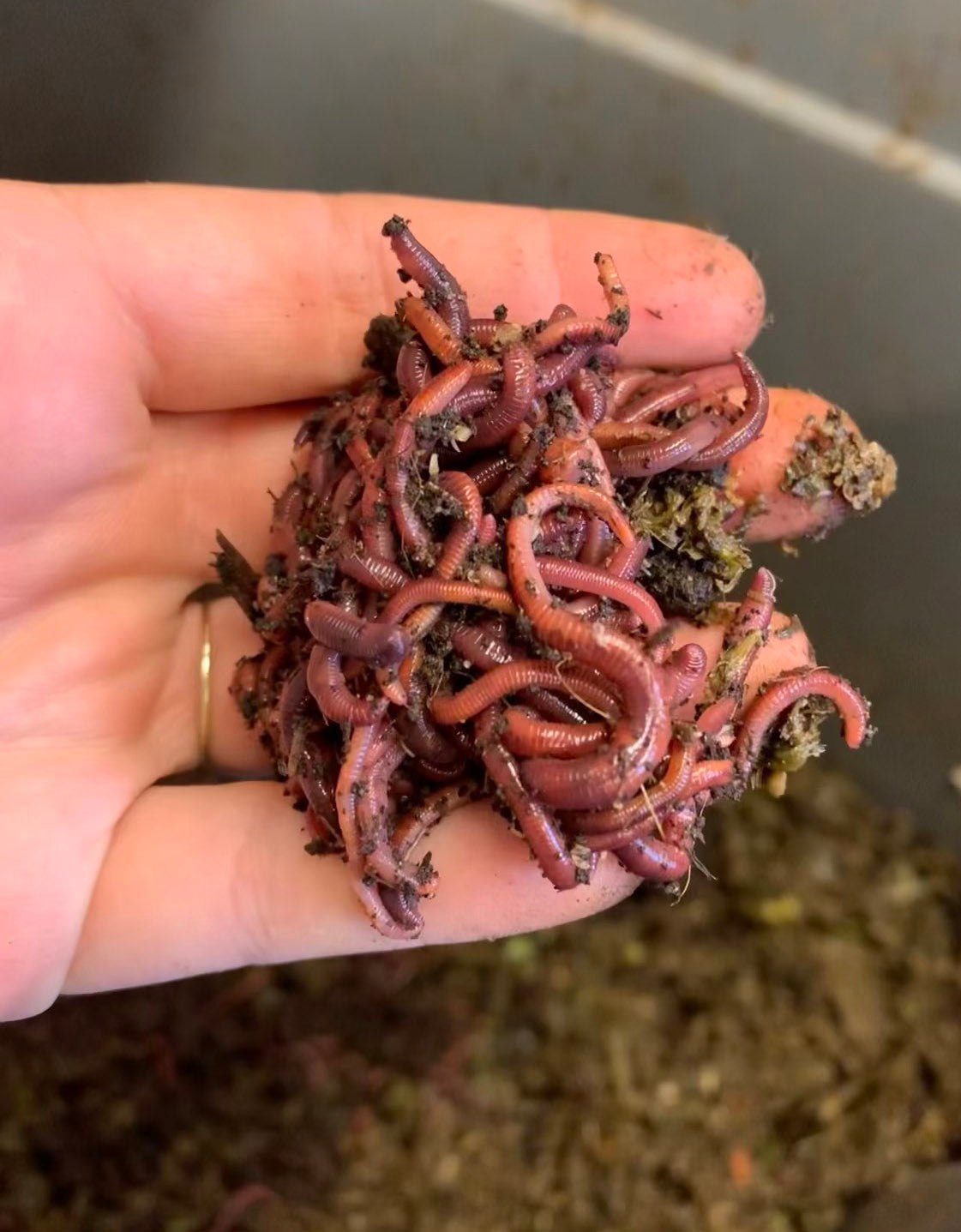Red Wigglers: The Unsung Heroes of Organic Waste Recycling
Red wigglers, or Eisenia fetida, serve as important agents in the natural waste recycling procedure, transforming discarded materials into beneficial vermicompost. As the world progressively looks for solutions to combat waste build-up and enhance agricultural productivity, comprehending the function of these worms comes to be necessary.
What Are Red Wigglers?
The remarkable resilience of red wigglers, clinically understood as Eisenia fetida, highlights their critical role in natural waste recycling. These small, reddish-brown earthworms are normally found in disintegrating raw material, such as garden compost piles and manure heaps. Lake Hickory Bait. Unlike other earthworm species, red wigglers flourish in nutrient-rich atmospheres and are very efficient at damaging down natural materials, making them important for vermicomposting

Advantages of Composting With Worms
Composting with worms, especially red wigglers, provides numerous advantages that improve both waste monitoring and soil health. Initially, these worms successfully damage down organic waste, transforming it into nutrient-rich vermicompost that enriches soil. This procedure speeds up disintegration, permitting a faster recycling of kitchen scraps and various other natural materials contrasted to conventional composting methods.
Additionally, the vermicompost created by red wigglers is brimming with useful bacteria, which assist boost soil structure, aeration, and dampness retention. This boosts the general wellness of plants, promoting strenuous development and enhanced yields in gardens and farming setups. The use of worms in composting minimizes the production of greenhouse gases, such as methane, contributing to a much more sustainable waste administration system.

Just How to Beginning Vermicomposting
Developing a vermicomposting system is a straightforward procedure that can produce significant advantages for both waste administration and dirt enrichment. To start, select an appropriate container, such as a plastic container or wood box, with sufficient air flow holes to guarantee correct air movement. The dimensions should ideally be about 2 feet by 3 feet, enabling enough room for the worms to prosper.
Next, prepare bed linens product, which can contain shredded newspaper, cardboard, or coconut coir. This bed linens should be dampened to create an ideal habitat for the worms. Once the bedding is in location, introduce red wigglers (Eisenia fetida) right into the bin, usually around one pound of worms for every square foot of surface.
Adhering to the positioning of worms, add organic waste, such as vegetables and fruit scraps, coffee grounds, and crushed eggshells. Prevent adding dairy products, meat, or oils, as these can produce odors and attract insects. Finally, place the bin in a shaded, temperature-controlled area to preserve optimal conditions for worm activity. With these steps, you will efficiently start a vermicomposting system that adds to sustainable waste monitoring and enhances your dirt.
Maintaining a Healthy And Balanced Worm Container
Oygenation is vital also. Delicately mixing the bed linen and food scraps every few weeks stops compaction and makes sure that all worms have accessibility to oxygen. Additionally, it is crucial to feed the worms suitably. A well balanced diet of fruit and veggie scraps, coffee premises, and smashed eggshells should be provided in small amounts to avoid overfeeding, which can cause smells and parasites.
Temperature level law is an additional vital aspect. Red wigglers prosper in a variety of 55 to 77 degrees Fahrenheit. If the bin ends up being as well warm or chilly, the worms may become stressed out - Lake Hickory Bait. Finally, regularly look for signs of health, such as worm population growth and the presence of healthy and balanced castings. By carefully handling these aspects, one can preserve a durable and efficient worm bin.
Influence On Lasting Living
The effective maintenance of a worm bin not just benefits the health of red wigglers but additionally adds substantially to sustainable living techniques. By reusing natural waste, such as kitchen area scraps and yard particles, red wigglers assist draw away significant quantities of material from land fills. This reduction in waste not just lowers greenhouse gas emissions but additionally reduces the ecological problem linked with waste monitoring.
Furthermore, the castings created by red wigglers act as a nutrient-rich natural fertilizer, enhancing dirt health and advertising plant growth. This all-natural choice to chemical plant foods sustains sustainable farming and gardening techniques, lowering reliance on artificial inputs that can harm ecosystems. Furthermore, worm composting fosters recognition of waste administration, encouraging individuals and areas to adopt even more lasting routines.

Verdict
In summary, red wigglers serve as crucial contributors to natural waste reusing through their reliable decomposition of natural products. By integrating vermicomposting into waste monitoring methods, individuals and neighborhoods can considerably lower waste while advertising ecological sustainability.
Comments on “Comprehensive Lawn Care Tips from Red Wiggler Express”